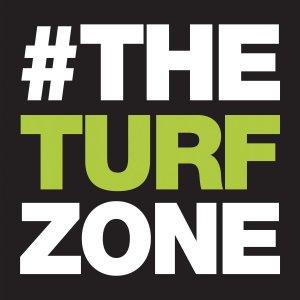The Turf Zone Podcast

Pennsylvania Turfgrass Council – Engineered Infield Soils — Field of the Future?
Pennsylvania Turfgrass – KAFMO, Between the Lines
Engineered Infield Soils — Field of the Future?
For Penn State researcher Evan Mascitti, soil mixtures for sports fields no longer need to be left to chance. “I’ve always been fascinated by how people use earth’s raw materials,” he says. At my first groundskeeping job I became interested in the different kinds of soil we used for each area of the field. I was thrilled to discover that there’s an entire branch of science devoted to athletic field soils, which overlaps with my interest in sports.”
Evan Mascitti’s work is focused on engineered soil mixtures for baseball infields. After earning his M.S. at Penn State in 2014 with a focus on thick-cut sod production, he worked for several years as a grounds manager in minor league and major league baseball before returning to graduate school. He is now pursuing his Ph.D. under Dr. Andrew McNitt.
What is Engineered Soil?
So what exactly is an engineered infield soil? Mascitti explains that the word “engineered” simply means that the soil mix is designed and made for a specific purpose. The mixture exhibits better properties than any of its components alone. In the case of infield soil, washed sand, clay, and sometimes calcined clay will be shredded dry, screened, and combined to result in an optimal surface underfoot. Groundskeepers have experimented with amending their infield soils since the 1870s, adding things like ash and even sawdust, but today’s mixes are much more precise. Mascitti’s research is the first academic study of the composition and production of optimized infield soil.
When asked when an engineered soil would be preferable to a traditional soil mix, Mascitti says that many different factors must be weighed. “Managing the infield skin has always been an art form best learned through experience,” he says. “A skilled groundskeeper knows how his or her infield will respond to wet or dry conditions.” Installing an engineered infield soil will help the field manager maintain the infield skin at the right consistency, neither too soft nor too hard, over a wider range of water content. This keeps the field playable under diverse weather conditions, giving the facility the potential for fewer cancellations and resulting loss of revenue.
The Cost Factor
Engineered soils mean a considerable investment, however. They are expensive for several reasons. First, engineered soil mixes are more costly to manufacture; each component must be separately pulverized, screened, kept dry, and then carefully mixed together. Not every supplier has the equipment or the desire to go through this process. The suppliers who do produce these mixes are few and far between, so trucking costs are also high. Ultimately, a mixed soil may cost between $50 and $200 per ton, depending on the location of the quarry and the amount of processing that is done. “Traditional” subsoil usually costs from $25-$45 per ton, including delivery.
Is the extra investment worthwhile? Mascitti recognizes that for some facilities with overall budget constraints and multiple development goals, it is simply not realistic to spend this much on infield material. But if games are routinely being cancelled due to rain, the higher cost of an engineered soil mix can be justified by the revenue which is not lost due to a cancellation. He points out that some organizations choose a gradual soil amendment approach over several seasons. Installing engineered soil can be seen as a long-term investment that will show permanent benefits over many seasons. But it is up to every individual facility to decide what approach is right for them. If the field manager and the players and coaches are happy with the performance of their existing field, there is no need to make changes.
Grounding in Reality






 Visit Podcast Website
Visit Podcast Website RSS Podcast Feed
RSS Podcast Feed Subscribe
Subscribe
 Add to MyCast
Add to MyCast